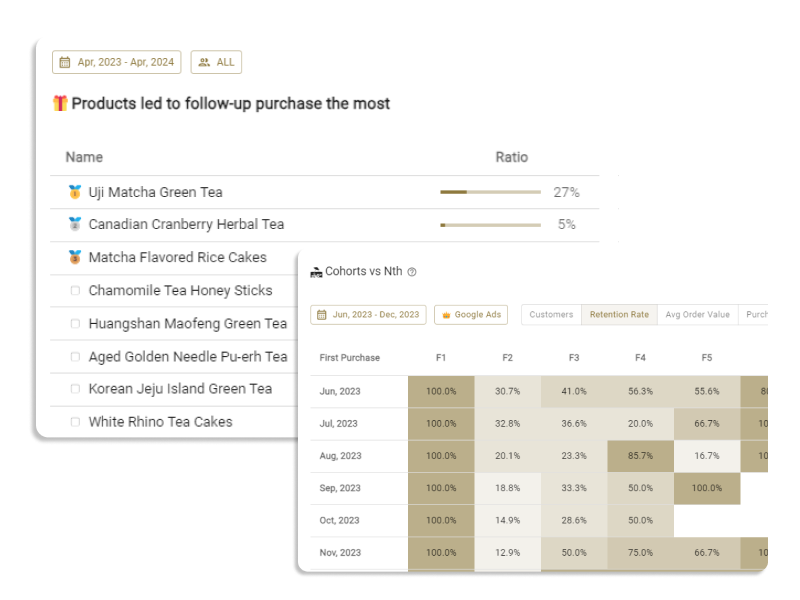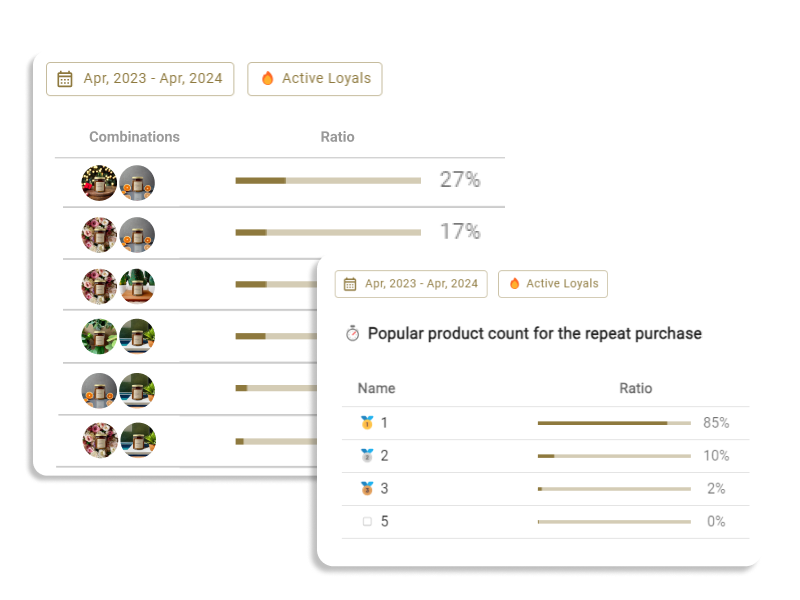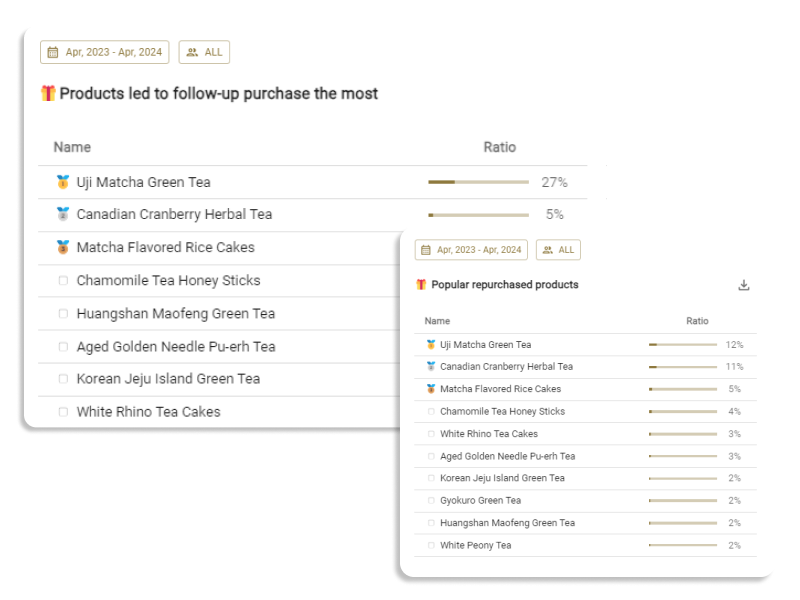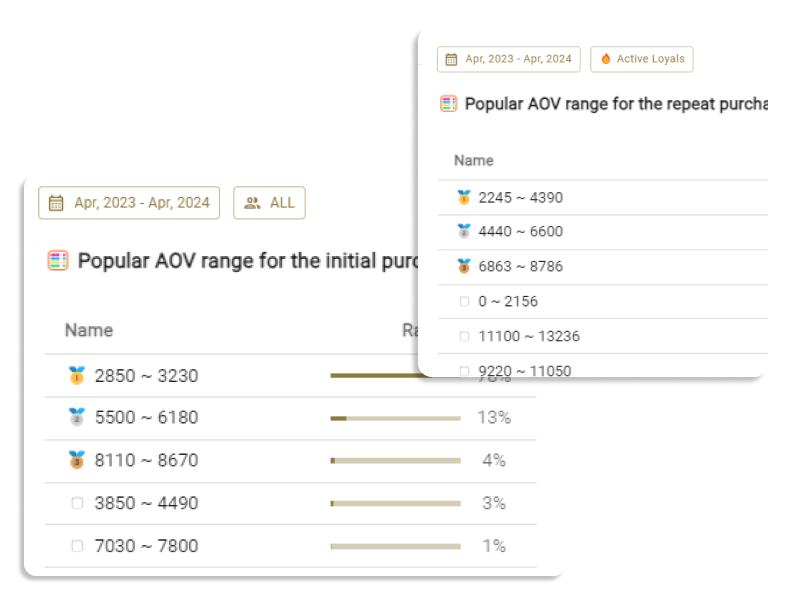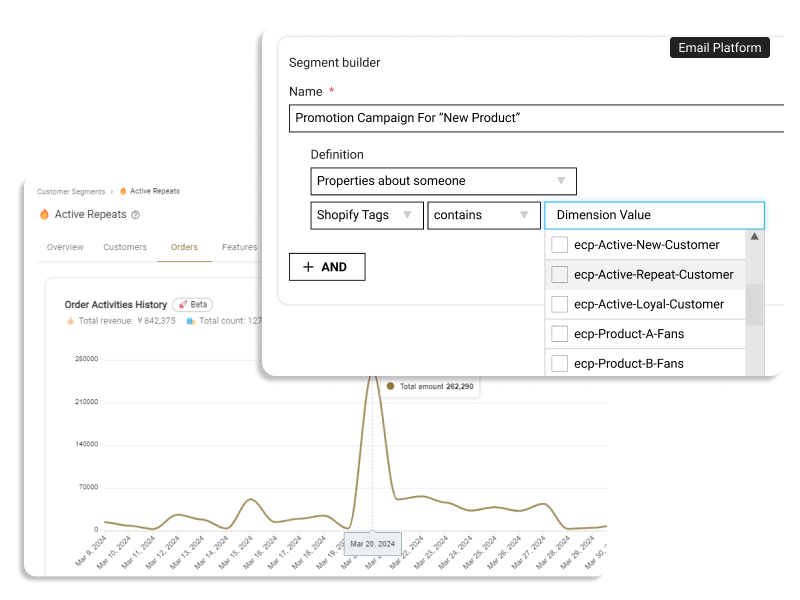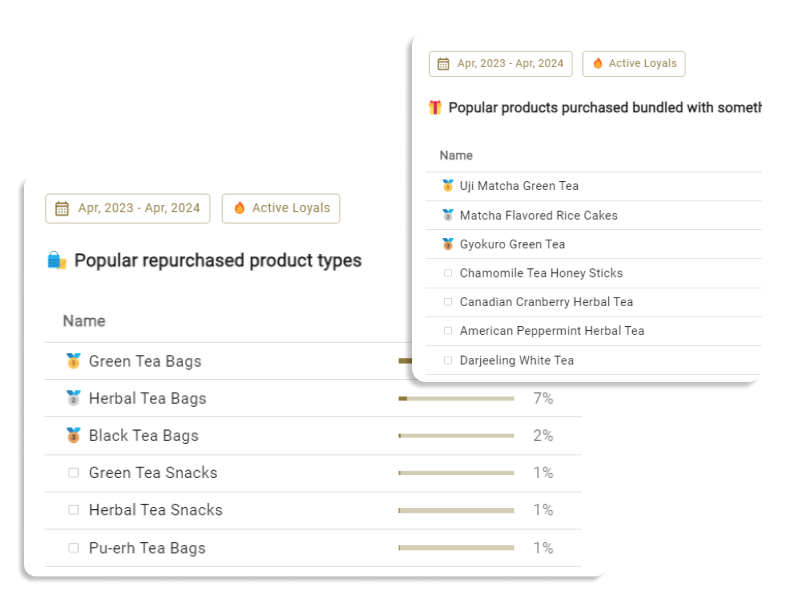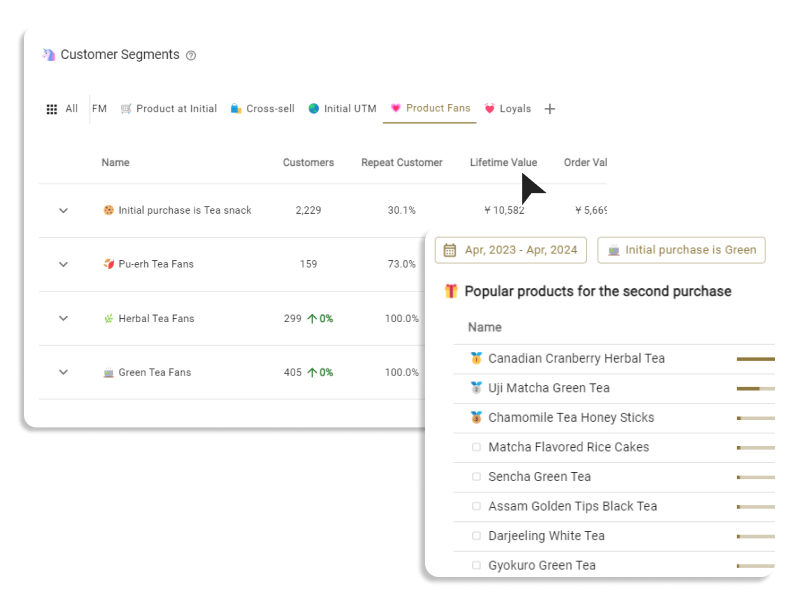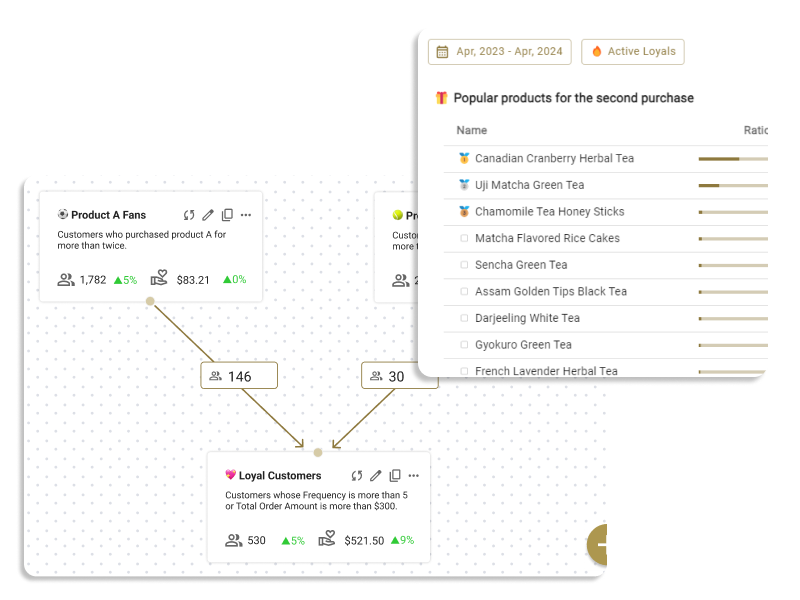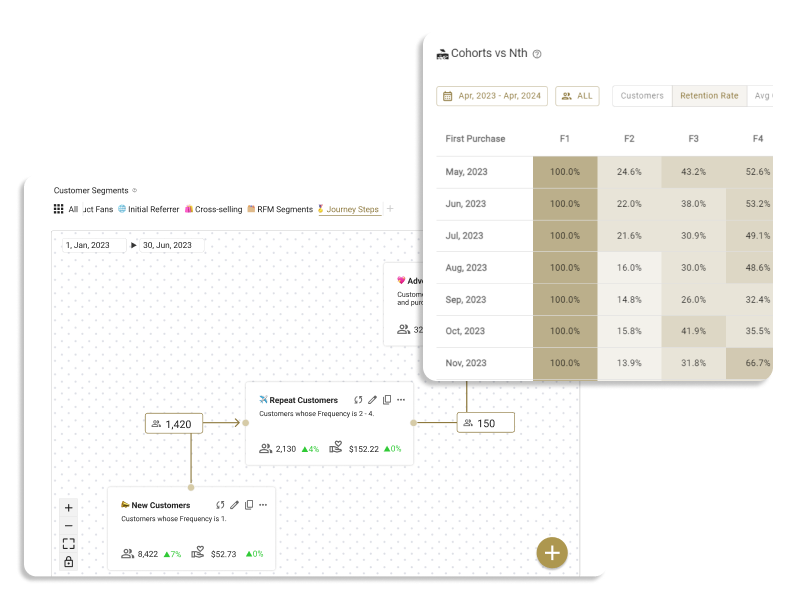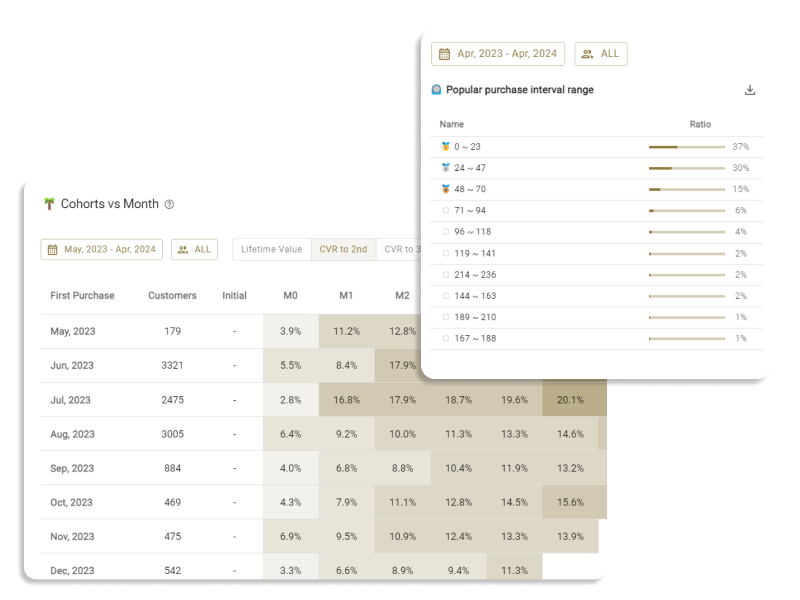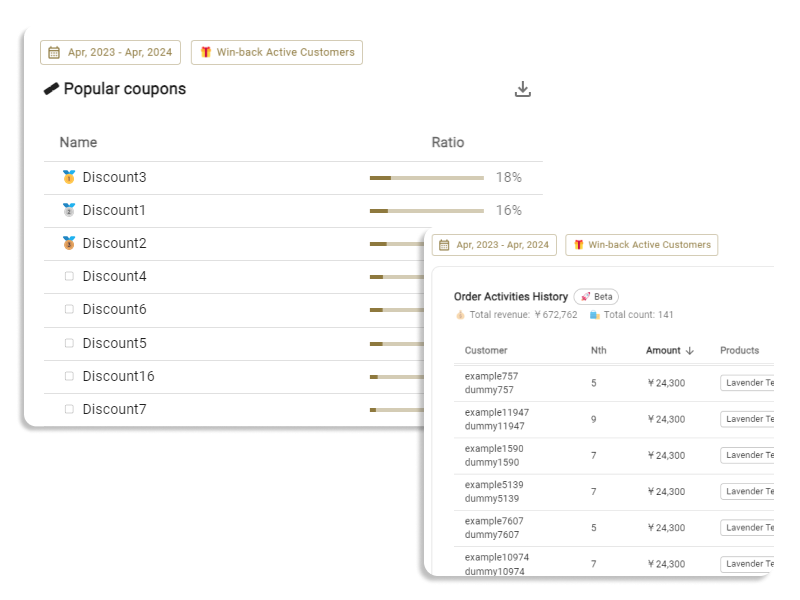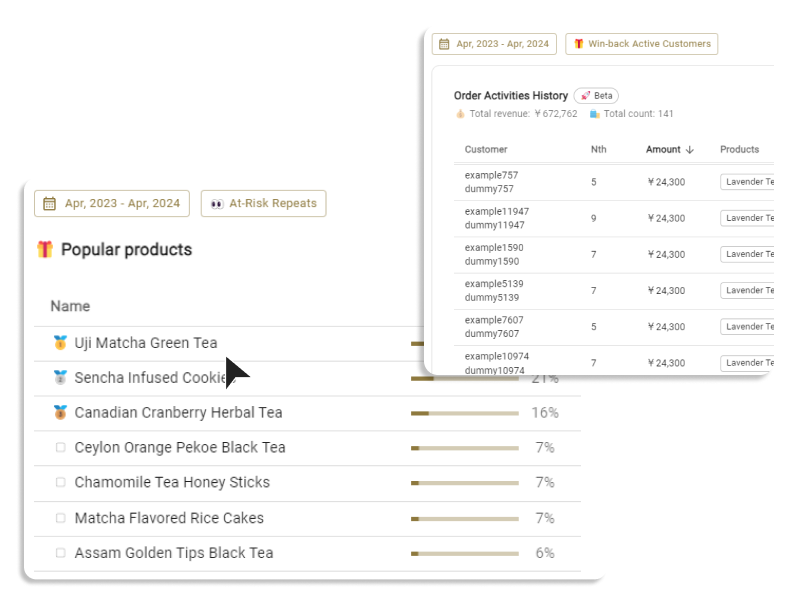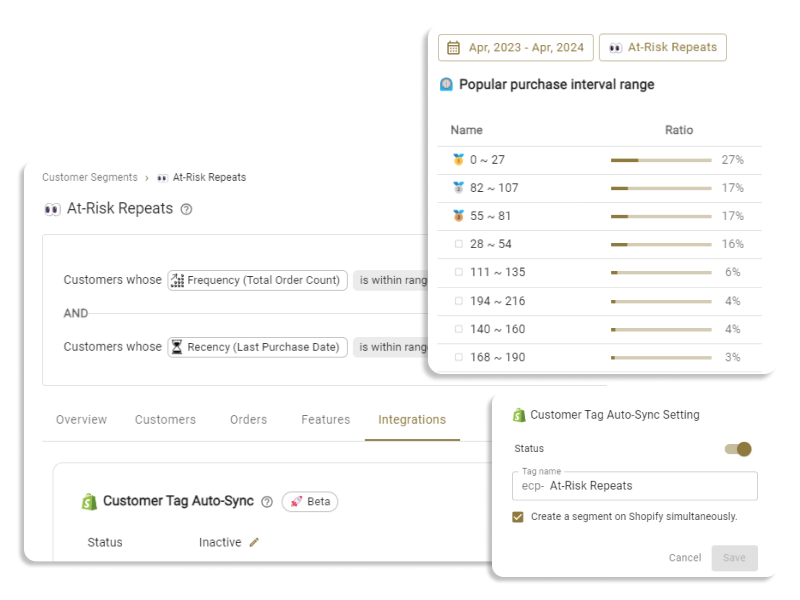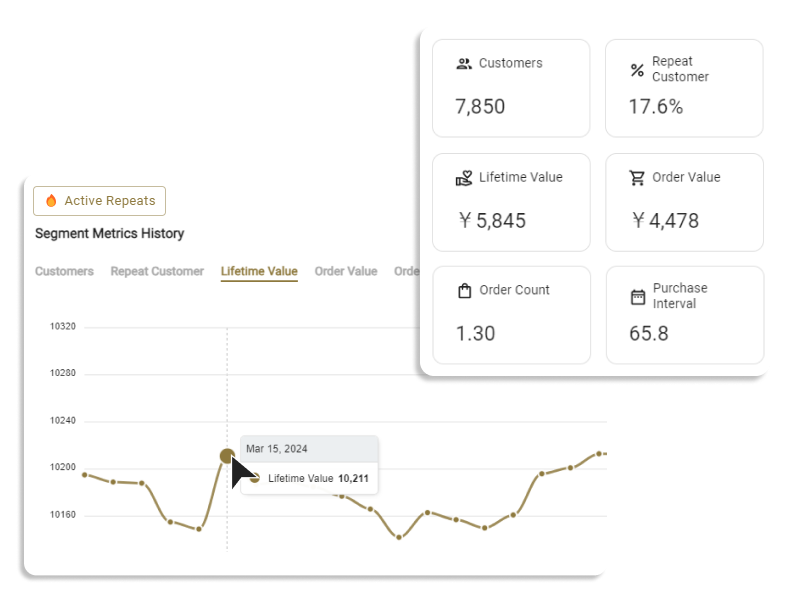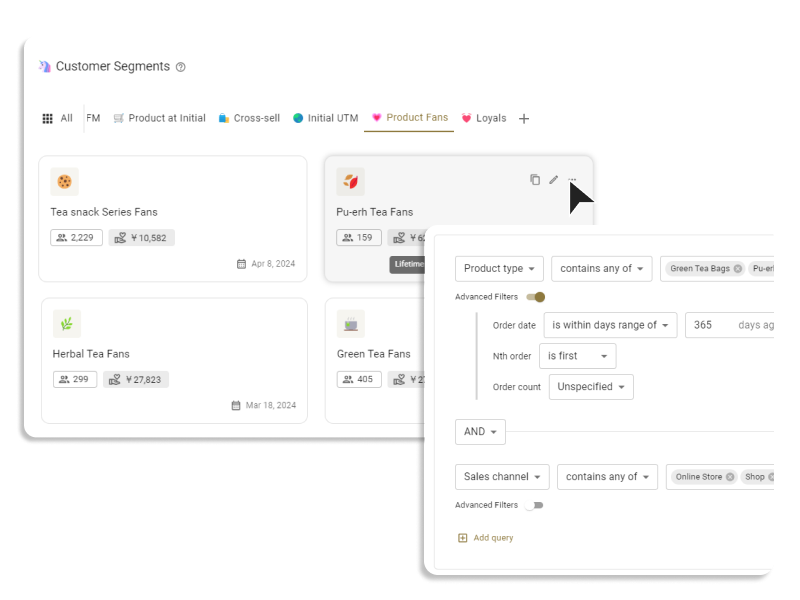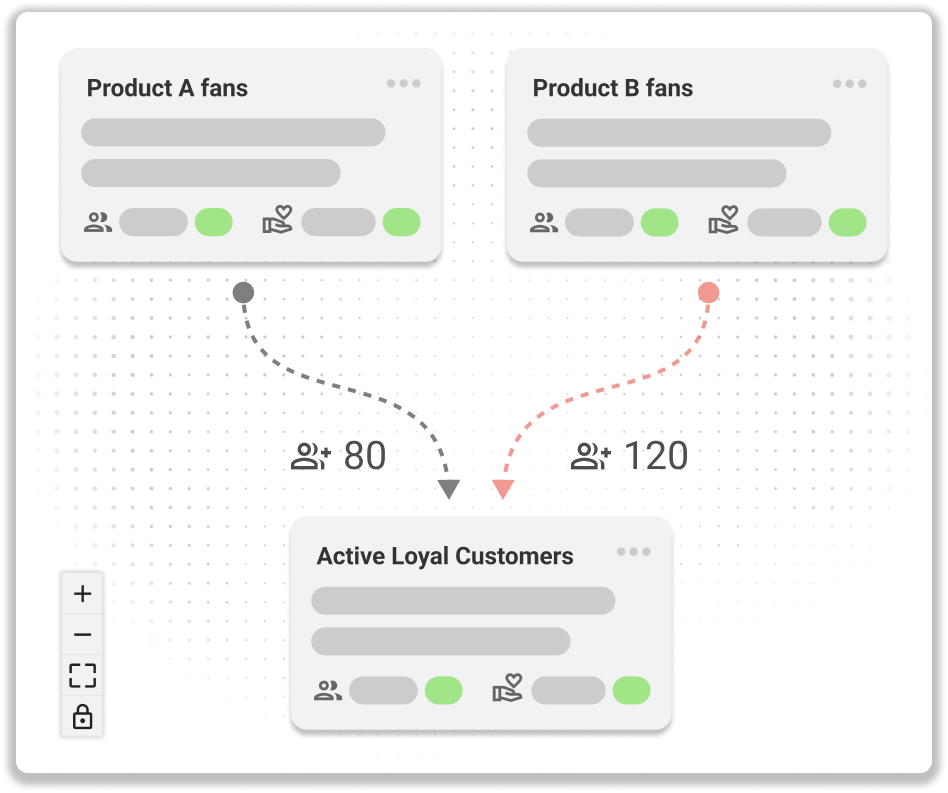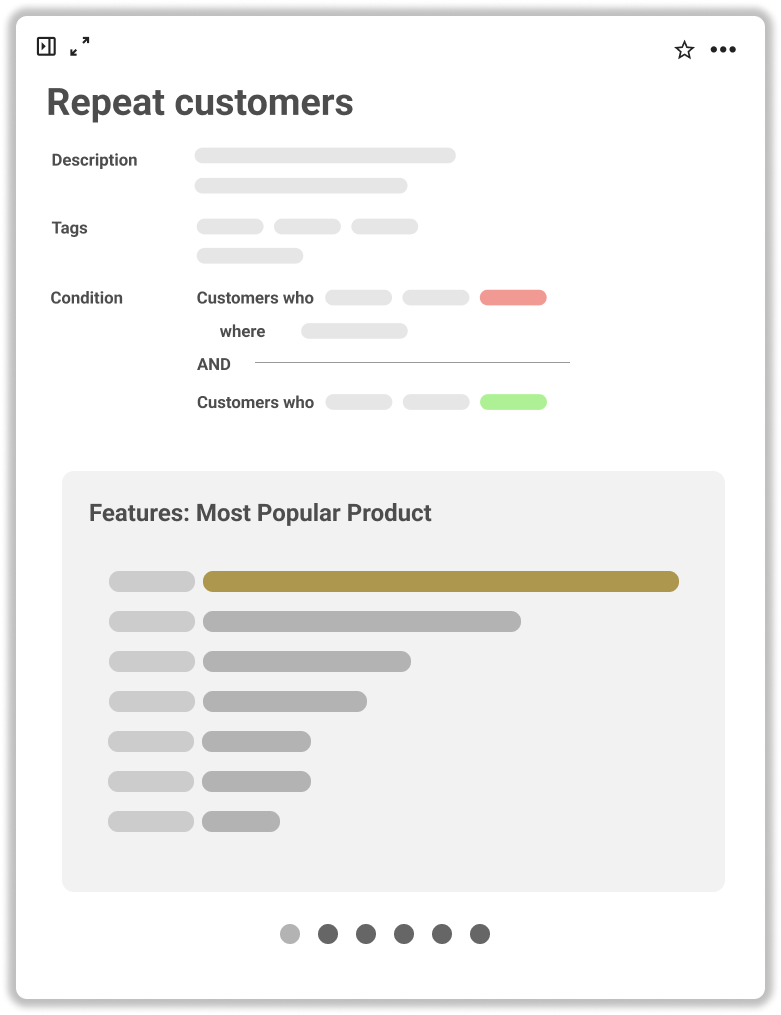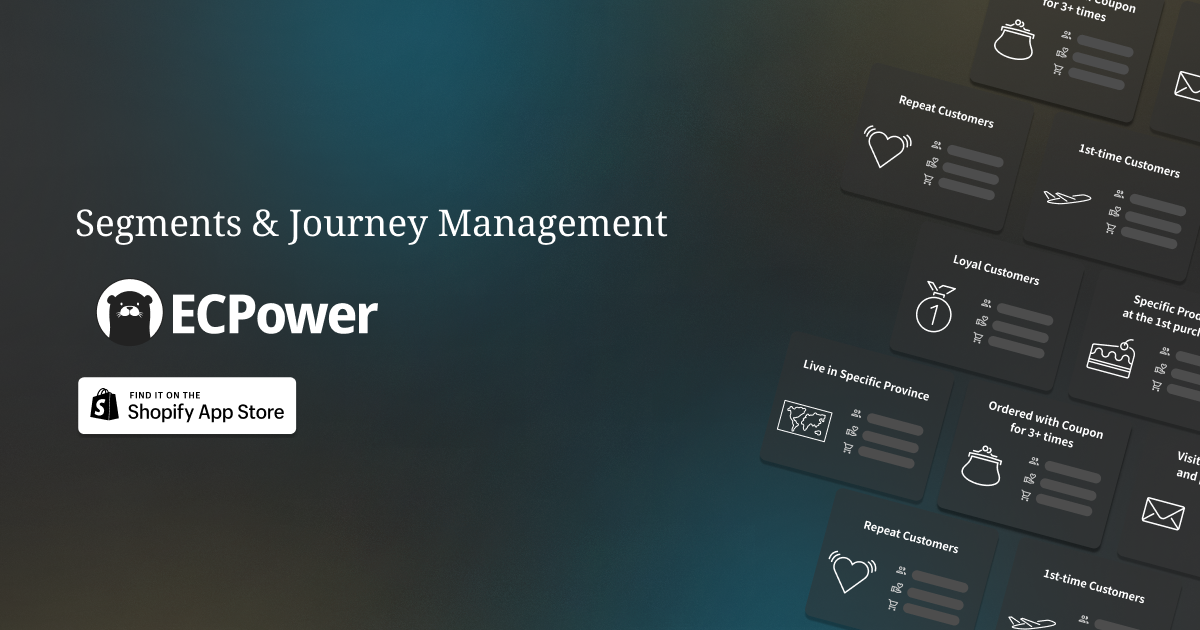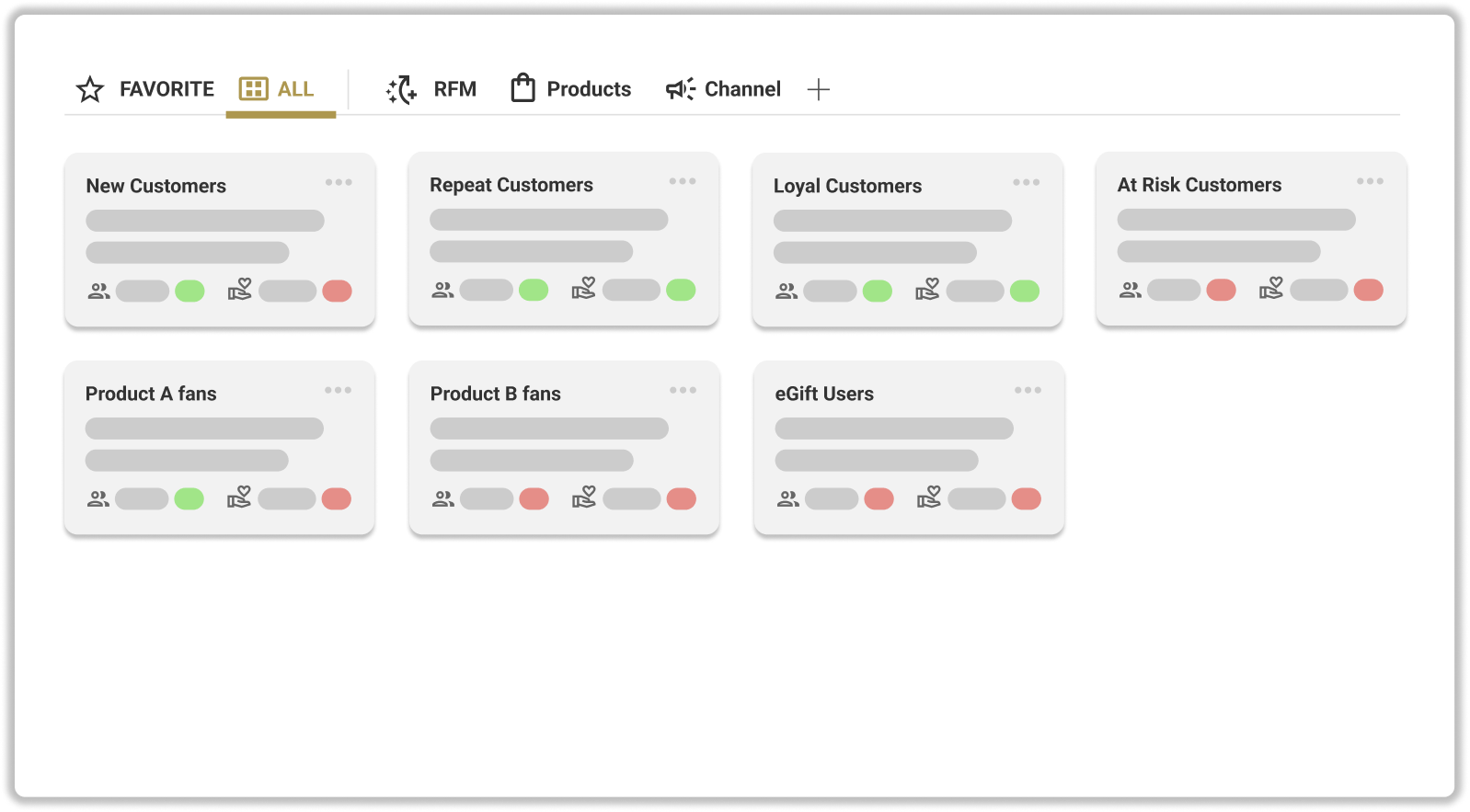Introduction
In this series of articles, we will introduce the steps to create customer segments using ECPower, and concretize actions towards improving the Lifetime Value (CLV). If you are just starting to use ECPower, or are considering using it, please take this as a reference.
In the previous article, we explained that CLV can be broken down into metrics such as purchase price, number of purchases, and re-purchase interval, and that it would be beneficial to identify bottlenecks in each metric using ECPower and consider the direction of CLV improvement measures.
Ultimately, as these metrics improve, it becomes essential to discuss how to increase and maintain 'loyal customers' or 'fans'.
In this article, we will explain a simple way to define loyal customers using ECPower.

Please refer to the link here for ECPower, a customer segment tool for e-commerce marketers.
The Simplest Definition of Loyal Customers
Defined by the total number of purchases or the total purchase amount
A universal definition of a loyal customer that applies to any store is one based on 'number of purchases' or 'total purchase amount'.
- Number of purchases exceeds a certain number
- Total purchase amount exceeds a certain amount
You can create based on these criteria. So, how should we determine the threshold?
The correct answer varies depending on the situation of the store, but you might want to think based on the number of purchases first. Let's consider the number of purchases when the re-purchase interval stabilizes, or the number of purchases when the continuity rate stabilizes as the standard for loyal customers.
In the case of this store, looking at the 'whole period', the re-purchase interval stabilizes after F5.

Also, in the case of this store, looking at the 'whole period', the continuity rate stabilizes after F6.

This time, we will create a loyal customer segment based on a standard of 5 purchases.

When you create a segment and compare the metrics with the overall customers, you can see characteristics such as higher purchase price per purchase and shorter re-purchase intervals.

Now, let's include the total purchase amount in the conditions.
You can capture customers who have fewer than 5 purchases but exceed the average CLV of loyal customers due to high purchase prices. Let's set the conditions in this way.

When compared, it seems that the number of customers has increased slightly.

The segment we are creating is a condition-based customer segment, so the customers included in the segment will be updated automatically every day. The more the number of people in this segment increases, the more the overall CLV should be raised.
Metrics change daily, so let's turn on metric transition tracking. The recording of the monthly transition graph will start.

Understanding the Purchase Trends of Loyal Customers
So, what kind of purchase trends do these loyal customers have?
Using the 'KPI Analysis' feature introduced in the previous article, you can better understand purchasing trends by analyzing loyal customers.
For example, let's filter the cohort tables of CLV, F2 conversion rate, and re-purchase interval by the loyal customer segment. You should see differences from the overall cohort table.



For example, you can see that current loyal customers have mostly converted to F2 by the second month, and are consistently re-purchasing within 30 days from the beginning.
*Please note that in most cases, the number of people is small, so the impact of individual data is strong.
Conclusion
In this article, we explained a simple way to define loyal customers based on the number of purchases and the purchase amount. An objective numeric-based definition of loyal customers based on the number of purchases and total purchase amount is, of course, useful.
However, when you think, "So, how can we increase the number of loyal customers?" you might struggle to come up with a good plan.
In the next article, we want to explain ways to increase the resolution of loyal customers using ECPower.

![Step3. Understanding Your Store's Loyal Customers [Part 1]](https://assets-global.website-files.com/642aaea322dda262581bd474/649ac02fd1c03ee683b9aee2_Basics3-t.png)

